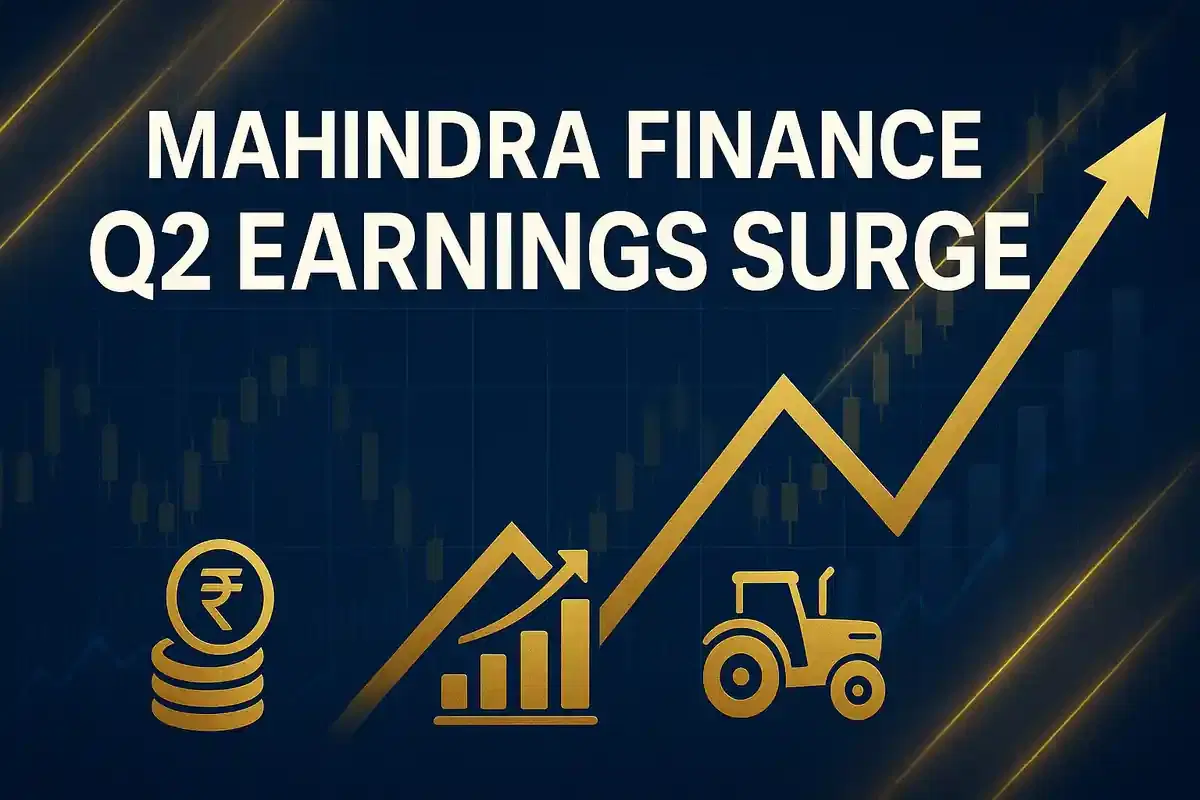Mahindra Finance Reports 45% Profit Growth in Q2, Driven by Strong Loan Expansion
Banking/Finance
|
28th October 2025, 12:27 PM

▶
Stocks Mentioned :
Short Description :
Detailed Coverage :
Mahindra & Mahindra Financial Services Ltd (M&M Fin) has reported a significant 45% year-on-year increase in its net profit for the second quarter, reaching ₹564 crore. This growth was supported by a 14.6% rise in Net Interest Income (NII) to ₹2,279 crore. The company's overall loan book saw a 13% expansion. A standout performance was observed in tractor financing, where disbursements grew by an impressive 41% year-on-year. M&M Fin maintained healthy asset quality with Stage 3 loans at 3.9% and Stage 2 plus Stage 3 loans at 9.7%. Capital adequacy remained strong at 19.5%, with a Tier-1 capital ratio of 16.9%. The company also reported a total liquidity buffer of approximately ₹8,572 crore, ensuring operational flexibility.
In addition to vehicle financing, M&M Fin is expanding its non-vehicle finance portfolio, which grew by 33% year-on-year, focusing on SME lending and leasing through Quiklyz. The SME segment, particularly micro and small enterprises, saw its asset book grow by 34% to ₹6,911 crore, primarily driven by secured offerings like Loan Against Property.
Impact: This strong quarterly performance demonstrates M&M Fin's robust operational capabilities and effective risk management. The substantial profit growth, healthy NII, expanding loan book, and diversified business segments are positive indicators for investors. This news is likely to boost investor confidence in the company and the broader non-banking financial sector (NBFC), potentially leading to a favorable impact on M&M Fin's stock price. The company's strong capital position and liquidity buffer further solidify its stability and growth prospects. Rating: 8/10
Glossary: * **Net Profit**: The profit a company makes after deducting all expenses, interest, and taxes from its revenue. * **Net Interest Income (NII)**: The difference between the interest income a financial institution earns from its lending activities and the interest it pays out to its depositors and lenders. * **Loan Book**: The total amount of money a financial institution has lent out to its customers. * **Disbursements**: The act of paying out money, such as releasing loan funds to borrowers. * **Tractor Disbursements**: Funds disbursed specifically for loans used to purchase tractors. * **Asset Quality**: Refers to the credit risk associated with a financial institution's assets, particularly its loans. It assesses the likelihood of borrowers repaying their loans. * **Stage 3 Loans**: Loans that are classified as having experienced significant credit deterioration and are considered non-performing or close to default. * **Stage 2 Loans**: Loans that have shown a significant increase in credit risk since origination but are not yet classified as Stage 3. * **Credit Cost**: The cost incurred by a lender due to loan defaults or impairments, often expressed as a percentage of the loan portfolio. * **Capital Adequacy**: A measure of a bank's or financial institution's capital in relation to its risk-weighted assets, indicating its ability to absorb losses. * **Tier-1 Capital**: The highest quality of capital, comprising common equity and disclosed reserves, which can absorb losses without a company being required to cease trading. * **Provision Coverage**: The ratio of loan loss provisions to non-performing loans, indicating how well potential losses are covered by reserves. * **Liquidity Buffer**: Assets that can be easily converted into cash to meet short-term obligations, ensuring the company can meet its financial commitments. * **Collection Efficiency**: The percentage of payments due that are actually collected by the lender in a given period. * **NBFCs (Non-Banking Financial Companies)**: Financial institutions that provide banking-like services but do not hold a banking license. They offer services such as loans, credit, and investments. * **PVs (Passenger Vehicles)**: Vehicles designed for personal transportation, including cars and SUVs. * **LCVs (Light Commercial Vehicles)**: Smaller commercial vehicles used for transporting goods, typically with a gross vehicle weight up to a certain limit. * **SCVs (Small Commercial Vehicles)**: Even smaller commercial vehicles, often used for local deliveries and last-mile logistics. * **SME Lending**: Providing financial services, such as loans and credit, to Small and Medium-sized Enterprises. * **Loan Against Property (LAP)**: A secured loan where a borrower pledges their immovable property (like a house or commercial space) as collateral to obtain funds. * **Asset Book**: The total value of assets held by a financial institution, with a particular focus on its loan portfolio.